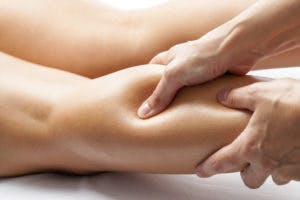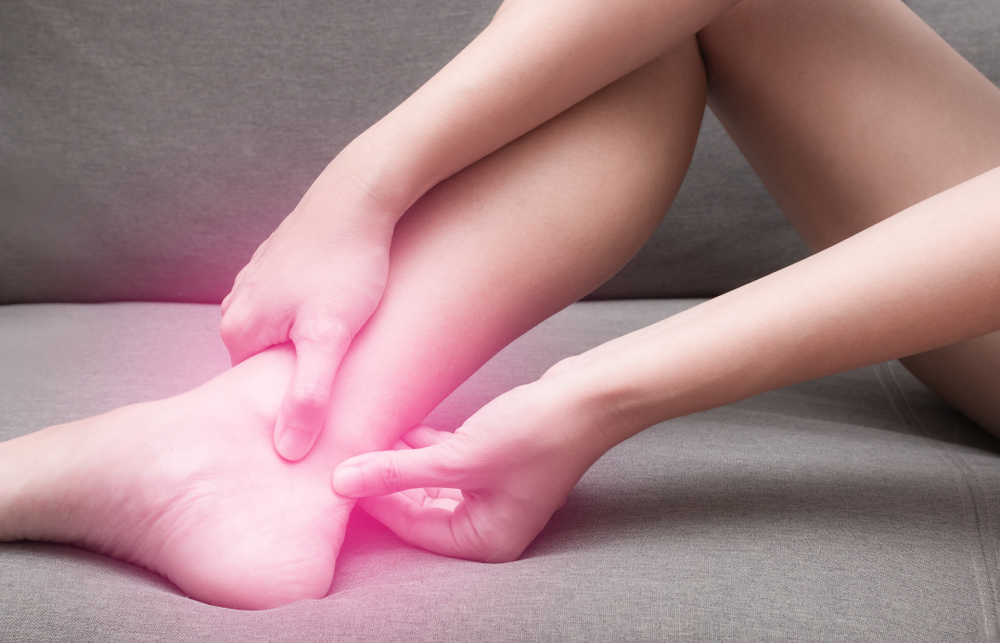Painful Achilles tendon problems are common in people who perform repetitive running and jumping activities. It is also common in less active people. Sedentary people with chronic diseases like high blood pressure, obesity, and diabetes are at an increased risk. Thankfully, several different exercises can help.
Even though it is commonly injured, the Achilles tendon is one of the largest and strongest tendons in the human body. It spans from your calf muscle in your lower leg down to its attachment on your heel. It helps transfer forces during routine walking and explosive movements in sports.
Irritation of your tendon is commonly referred to as “Achilles tendinitis.” This implies the presence of inflammation. However, studies show inflammation is absent in most people with a painful Achilles tendon. It is now widely believed that the problem is related to degeneration and weakening of your tendons, not inflammation. This explains why many treatments to reduce inflammation, such as rest and anti-inflammatory medications, are ineffective.
The Role of Exercise in Managing a Painful Achilles Tendon
Research suggests that 3 out of 4 athletes with a painful Achilles tendon will fully recover with conservative treatment like exercise. The prognosis for sedentary people is less favorable. Regardless of your age or activity level, 4 to 6 months of conservative treatment is recommended.
Research suggests exercise is the most successful conservative treatment for painful Achilles tendon disorders. The focus of the exercise program is to progressively load and strengthen your painful tendon.
Some pain, usually 5/10 or less, is acceptable during exercise. However, increased pain experienced during exercise should not persist until the next day. If this occurs, see your physical therapist. Traditionally, exercise includes eccentric movements, characterized by the slow lowering of your heel from a tip-toe position. Other forms of strengthening exercises are equally effective. The 4 exercises described here are supported by the latest research.
2-Leg Heel Raise
This is the first exercise to try as part of a progression. Stand with equal weight distributed between both your legs. Hold on to a wall or other object for support. Slowly rise on both tip-toes. Pause for 2 seconds, then slowly lower to the starting position.
Perform 3 sets of 15 repetitions daily. As pain diminishes and strength improves over a few weeks, begin performing this exercise with your heels hanging from a step. This increases the range of motion of the exercise and provides a stretch stimulus to the tendon. Progress the exercise further by adding a backpack with 10 pounds of weight.
1-Leg Heel Raise
Do this exercise during the first few weeks along with the 2-leg exercise. If pain greater than 5/10 persists after the exercise and into the next day, delay the 1-leg version. Discuss this with your physical therapist.
Start by standing on your involved leg only. Slowly rise to your tip-toe. Pause for 2 seconds, then slowly lower to the starting position. Do 3 sets of 15 repetitions daily. As pain diminishes and strength improves over a few weeks, perform this exercise with your heels hanging from a step. This will increase the range of motion of the exercise and provide a stretch stimulus to your tendons. Progress the exercise further by adding a backpack with weight.
Eccentric Heel Drop
This exercise is also performed during the first few weeks, along with the 2-leg and 1-leg exercises. If pain greater than 5/10 persists after the exercise and into the next day, delay it. Discuss this with your physical therapist.
Start by standing on the uninvolved leg only. Slowly rise onto your tip-toe of the uninvolved leg. Then shift the weight onto your involved leg. Slowly lower to the starting position using your involved leg only. Repeat this sequence of “up with the good” and “down with the bad” leg.
Do 3 sets of 10 to 15 repetitions each day. As pain diminishes and strength improves over a few weeks, begin performing this exercise with the heels hanging from a step. Progress the exercise further by adding a backpack with weight.
Heavy Slow Resistance Heel Raise
For many of you with a painful Achilles tendon, performing the previous 3 exercises will get you outstanding results within 3 months. However, if you are involved in running and jumping sports, you may need higher loads to strengthen your injured tendons.
Heavy, slow resistance exercise is performed with progressively higher loads done very slowly. Start with loads that allow 3 sets of 15 repetitions. Every 2 to 3 weeks, increase the load and decrease the reps. Shoot for 3 to 4 sets of 6 to 8 very slow repetitions with high loads to fully stimulate tendon remodeling. These exercises can be performed with a barbell on your back or with exercise machines such as a leg press or calf raise machine.
Speed Recovery by Combining Exercise with Manual Therapy

Many people will fully recover within 12 weeks to 1 year of performing these Achilles tendon loading exercises. This length of recovery may not be acceptable for some people.
Thankfully, research shows greater improvements can be made when exercise is combined with manual therapy performed by your physical therapist. One recent study showed that the addition of soft tissue massage resulted in 100% of patients achieving a successful outcome at 12 weeks compared to 50% who performed only exercise.
During each therapy session, 15 minutes of soft tissue mobilization is applied to your lower leg, ankle, and foot musculature. The purpose is to improve mobility and further stimulate tendon healing and remodeling.
See Your Physical Therapist & Overcome Your Painful Achilles Tendon
Painful Achilles tendon disorders are debilitating. Thankfully, exercise and manual therapy treatments are proven to help. Recovery is usually not quick or easy. Success is dependent on your commitment to perform the exercises regularly. Expect some pain during the exercise, but don’t progress things too quickly if pain persists into the next day. Often, a little guidance from your physical therapist keeps you on the right track. Contact your physical therapist to get help.

